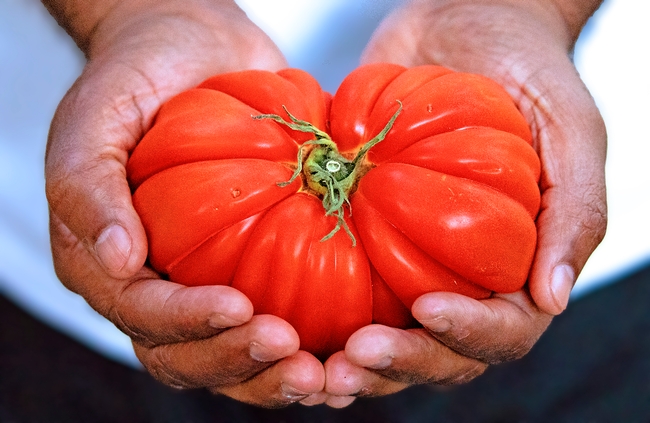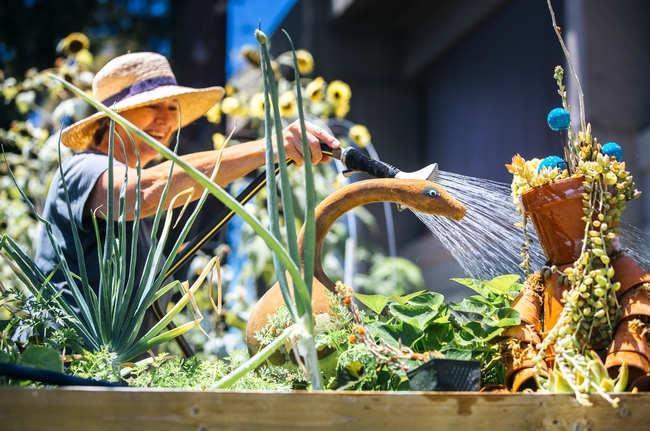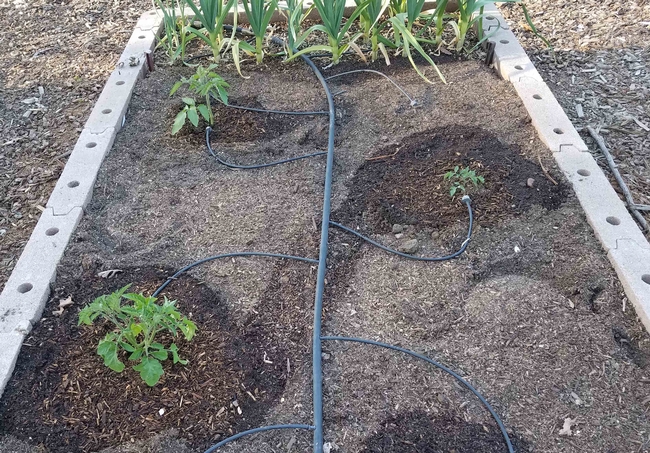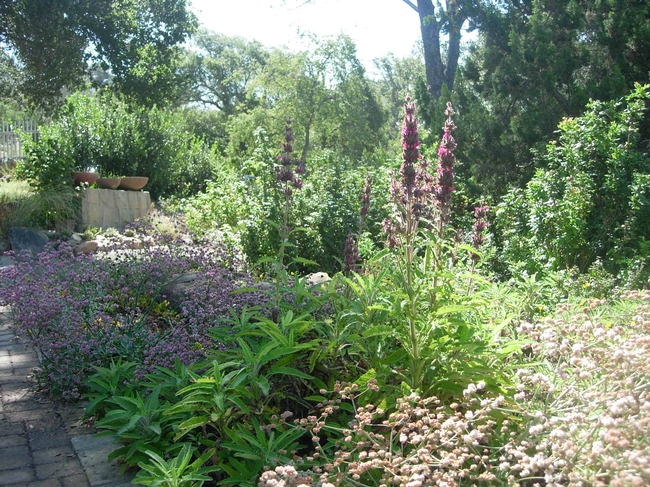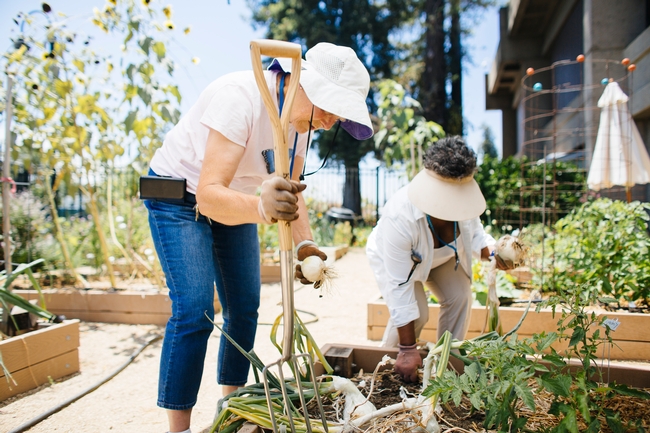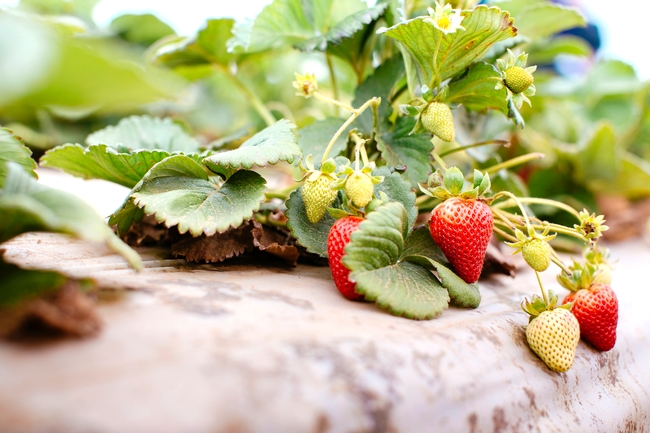In the News
August Garden Tips - Keeping our Summer Gardens Going
Summer is flying by and somehow it is already August, kids are going back to school and we are starting to dream of fall gardens. Our August gardens still need our love and care though. Here are some tips to keep your August garden going:
- Morning Watering: Water your plants early in the morning while it's still cool. This practice reduces evaporation and moisture loss, ensuring plants receive the water they need to thrive. Additionally, morning watering allows the plants to dry off during the day, reducing the risk of fungal diseases.
- Keep Young Plants Watered: Monitor fruit and shade trees, shrubs, and perennials planted within the last year closely. Young roots are especially vulnerable to drying out during their first summer. Check soil moisture regularly to prevent dehydration.
- Monitor Vegetable Plants: Wilting or drooping leaves on vegetable plants during hot afternoons do not always indicate dry soil. Check the soil moisture by digging down and water only when necessary to avoid overwatering.
- Prune Fruit Trees: After harvesting fruit, prune the new summer growth of your fruit trees. This is a great way to properly manage growth, shape the tree, and an opportunity to remove dead or diseased wood. The pruning will also help sunlight penetrate the interior wood, encouraging the development of fruiting wood for the next season.
- Regular Harvesting: Harvest beans, cucumbers, squash, and tomatoes at least every other day. Regular harvesting promotes further production, ensuring a continuous and bountiful supply of summer vegetables.
- Protect Tree Trunks: Apply a coat of light-colored interior latex paint to tree trunks to prevent sunscald, a condition where the bark on the south or southwest side of a tree becomes sunburned. The light-colored paint reflects sunlight, helping to keep the bark temperature more consistent and preventing damage from the sun. This is particularly important for young trees, as they have not yet developed a thick bark to protect them from the sun's rays.
- Weed Control: Continue pulling weeds before they form seed heads and scatter their seeds. Consistent weeding now will reduce weed problems later in the season.
- Prune Berry Canes: After berry harvest, prune the canes that have finished bearing fruit. Different berries require specific pruning techniques, so know your variety and prune accordingly.
- Tomato Care: Watch for pests and diseases on your tomato plants. Maintain a consistent watering schedule to prevent issues like blossom end rot and monitor for destructive pests like the tomato hornworm caterpillar.
- Care for Roses: Hose off the foliage of roses frequently to reduce the likelihood of powdery mildew and discourage spider mites. Contrary to popular belief, this practice benefits the plants' health. Complete this task early in the day to allow leaves to dry before evening, it's important to ensure proper air circulation and avoid prolonged wet conditions to prevent other fungal issues.
- Planting Warm-Season Vegetables: July is still an excellent time to plant warm-season vegetables such as beans, cucumbers, eggplants, okra, peppers, squash, and tomatoes. These vegetables thrive in warm weather and can be harvested in late summer or early fall. Ensure they are well-watered to support their growth.
- Plan Cool-Season Vegetable Garden: It's time to start planning our Fall gardens. This is a time to plant cool season crops like leafy greens (kale, chard, mustard greens, arugula, lettuce, spinach, bok choi and more), brassicas (broccoli, cabbage, cauliflower, romanesco, Brussels, kohlrabi), root veggies (radish, beets, turnips, carrots) plus peas, garlic, onions, and leeks.
Keep your August gardens going with these tips and enjoy dreaming of the cooler weather coming soon!
Ask your local UC Master Gardener Program.
Have a gardening question? UC Master Gardener volunteers are available to help. Click here to Find a program and connect with your local UC Master Gardener Program. You will be redirected to your local county website and contact information. UC Master Gardener volunteers are available to help answer questions for FREE. Happy gardening!
Water Management for California Home Gardeners
Water is essential for any garden, but it's crucial to use water wisely in a place like California, where droughts are common. Effective water management can help home gardeners keep their plants healthy while conserving this precious resource. Thoughtful water management uses resources efficiently and sustainably to meet current and future needs. It involves planning, developing, distributing, and managing the optimum use of water to ensure plants survive and look good. By conserving water, home gardeners contribute to the preservation of local ecosystems and the sustainability of the environment.
Plant Water Use
Understanding how much water your plants need is the first step in effective water management. Different plants have different water requirements. For instance, succulents and cacti need less water than vegetables or fruit trees. It's important to group plants with similar water needs together. This way, you can avoid overwatering or underwatering specific plants. You can learn about plant water needs from plant labels, gardening books, or by reaching out to your local UC Master Gardener volunteers for support. Additionally, observing your plants and learning their symptoms of water stress, such as wilting or drooping leaves, can also help inform water management.
Watering Systems
Several watering systems can help manage water use in a garden. Drip irrigation is one of the most efficient methods. It delivers water directly to the roots of plants, minimizing evaporation and runoff. Soaker hoses, porous hoses that seep water along their length, are another good option for watering garden beds. Traditional sprinklers can be used, but they are less efficient because they tend to waste water through evaporation and runoff. Newer, more advanced systems include weather-based controllers that adjust watering schedules based on weather conditions, ensuring plants get the right amount of water without waste.
Irrigation Best Practices
Take a proactive role in water conservation by adopting best practices for irrigation. Watering early in the morning or late in the evening reduces evaporation, ensuring more water reaches the plants. Mulching the garden helps retain soil moisture and reduces the need for frequent watering. Regularly checking for leaks in the irrigation system and repairing them promptly can prevent water loss. Adjusting the watering schedule based on the season and weather conditions is also essential. During cooler months or after rainfall, plants need less water; in the hot summer, they may need more frequent watering.
Use Drought Tolerant Plants
One of the most environmentally responsible ways to conserve water in a garden is to use drought-tolerant and/or native plants. Drought tolerance reflects the ability of a plant to withstand less than optimal water supplies due to adaptive or avoidance mechanisms. While many native plants possess drought-tolerant traits and require less supplemental irrigation once established, many non-native plants Mediterranean-adapted plants also thrive on relatively lower water. It is important to remember that these plants require water regularly until their root structure is well established in landscape soil. Maintaining these plants with deep and infrequent irrigation once established is a great way to reduce landscape water use. By incorporating these plants into your garden, you're also providing habitat for local wildlife. This creates a beautiful, low-maintenance landscape that thrives with less irrigation.
Best Practices for Keeping Plants Alive During a Drought
During a drought or under water restrictions, it's essential to prioritize how you use water in the garden. Focus on watering the most valuable and vulnerable plants first, such as shade trees and young trees. Slow, deep watering is more effective than frequent shallow watering. This involves watering to a depth slightly below the plant root zone which encourages roots to grow deeper into the soil, making plants more drought-tolerant. Reducing the size of your lawn or replacing it with drought-tolerant ground covers can also save significant amounts of water. Additionally, using shade cloth or temporary shading can help reduce water loss by protecting plants from intense sunlight.
By understanding plant water use, choosing suitable watering systems, adopting best irrigation practices, using drought-tolerant plants, and implementing drought survival strategies, California home gardeners can maintain a healthy and beautiful garden while conserving water. Water management is beneficial for your garden and the environment, and is an especially important practice for Californians. Your conscious efforts in water management contribute to the sustainability of our environment.
To learn more please reach out to your local UC Master Gardeners Program.
Gardening in Extreme Heat with UC Master Gardener Tips to Save Your Landscape
A scorching summer heat wave is bringing triple digit temperatures and excessive heat alerts to much of California. The National Weather Service is predicting temperatures upwards of 105 and 115 degrees for several days in a row. Many home gardeners are wondering how they can help their plants, trees, or shrubs survive the intense summer heat.
“We are getting a lot of questions from around the state from people worried about how the extreme temperatures are going to affect the plants or trees in their yard,” says Missy Gable, director of the UC Master Gardener Program. “With a little extra planning, you can help your garden beat the heat and survive the hot summer weather.”
UC Master Gardener volunteers are available to help answer gardening questions and provide advice. Here are seven quick and easy ways to help make sure your plants and trees survive the hot summer months:
- Take care of yourself first, only garden during the cooler times of the day in the early morning or evening hours. Limit the time spent outdoors during the peak temperatures. Drink plenty of water, wear lightweight loose clothing, a brimmed hat, and work in the shade whenever possible.
- Shade your plants. Use a shade cloth, patio umbrella or other temporary structure to protect sensitive plants from the direct sun. This can reduce the heat stress on plants and prevent scorching of leaves.
- Water in the morning. Watering plants in the early morning helps to minimizes water loss due to evaporation, which is less prevalent during the cooler part of the day. This practice allows your plants to absorb water efficiently and become fully hydrated before the heat intensifies.
- Water trees deeply and less frequently. Water trees deeply and less frequently—yes, that's right, less frequently! The key is to water "deeply." Deep watering, promotes a robust network of deep roots, which helps the tree access water from deeper in the soil and become more drought-tolerant.
- Mulch, mulch, and more mulch. When temperatures get extreme, having a good layer of mulch prevents soil from heating up excessively and loosing water to evaporation. Apply 4-6 inches of a medium shred bark mulch to insulate the soil.
- Group container plants together: Placing container plants close to each other may help create a microclimate that retains moisture and reduces temperature fluctuations. Consider temporarily moving container plants to shadier areas.
- Watch for radiant heat. Pay special attention to plants located near walkways, patios, and other structures that radiate heat. These plants are often the first to show signs of heat stress and may require extra water to cope with the increased temperature.
- Don't fertilize plants or trees during hot summer months. Fertilizers aim to increase the growth of plants and trees. When a fertilizer is applied, especially one that is high in Nitrogen, a plant is triggered to produce more green growth. An increase in growth means an increase in water and nutrient needs. During hot spells, it is especially hard to keep up with plant water and nutrient needs as soils dry out quickly and water may not be readily available.
Thankfully,
we're not trying to garden on the surface of the sun. Unfortunately, sometimes it can feel like it. Stay cool, and don't forget to plan for your garden in the fall—it's the perfect excuse to stay inside with the air conditioning and an ice-cold beverage.
Ask your local UC Master Gardener Program
Have a gardening question? UC Master Gardener volunteers are available to help. Click here to Find a Program and connect with your local UC Master Gardener Program. You will be redirected to your local county website and contact information. UC Master Gardener volunteers are available to help answer questions for FREE. Happy gardening!
July Garden Tips - Summer Fun and Keeping Cool
As the summer sun shines brightly, July is a critical period for gardeners to nurture their plants, ensuring they thrive during the hottest part of the year. This month is a time of significant growth and harvest, where your diligent care can lead to a successful and bountiful garden. Here are gardening tips to help you make the most of your garden in July.
- Morning Watering: Water your plants early in the morning while it's still cool. This practice reduces evaporation and moisture loss, ensuring plants receive as much of the water as possible. Additionally, morning watering allows the plants to dry off before bright overhead sun exposure, reducing the risk of sunburn. Correctly irrigated plants are less susceptible to pests and diseases.
- Watering Young Plants: Closely monitor fruit and shade trees, shrubs, and perennials planted within the last year. Newly planted perennials have small root systems and are vulnerable in drought and low water conditions.. Check soil moisture regularly to prevent dehydration.
- Monitor Vegetable Plants: Wilting or drooping leaves on vegetable plants during hot afternoons do not always indicate dry soil. Check the soil moisture with a moisture probe or by digging down and water only when necessary to avoid overwatering.
- Prune Apricot and Cherry Trees: Apricot and cherry trees should be pruned in summer to avoid a fungal disease called Eutypa dieback. Prune upright growth to manage size and encourage the tree to put nutrients into fruiting branches.
- Regular Harvesting: Harvest beans, cucumbers, squash, and tomatoes at least every other day. Regular harvesting promotes further production, ensuring a continuous and bountiful supply of summer vegetables.
- Protect Tree Trunks: Apply a 50:50 mix of interior white latex paint and water to tree trunks to prevent sunscald, a condition where the bark of a tree becomes sunburned. This is particularly important for young trees, as they have not yet developed a thick bark to protect them from the sun's rays.
- Weed Control: Continue pulling weeds before they form seed heads or scatter their seeds. Consistent weeding now will reduce weed problems later in the season.
- Prune Berry Canes: After berry harvest, prune the canes that have finished flowering and bearing fruit. The canes that have not flowered and fruited should be retained. Different berries require specific pruning techniques, so know your variety and prune accordingly.
- Tomato Care: Watch for pests and diseases on your tomato plants. Maintain a consistent watering schedule to prevent issues like blossom end rot and monitor for destructive pests like the tomato hornworm caterpillar.
- Care for Roses: Prune spent flowers to encourage more blooms later in the season. Remove flowers by cutting above the first outward five-leaflet set of leaves (or lower on mature plants). Dead and crossing canes can also be removed at any time.
Ask your local UC Master Gardener Program.
Have a gardening question? UC Master Gardener volunteers are available to help. Click here to Find a Program and connect with your local UC Master Gardener Program. You will be redirected to your local county website and contact information. UC Master Gardener volunteers are available to help answer questions for FREE. Happy gardening!
Celebrate Pollinator Week with Citizen Science
Get ready to buzz with excitement because Pollinator Week is just around the corner! This international event, celebrated from June 17-23, 2024, is all about showing our support for pollinators. Pollinators are tiny heroes responsible for so much of the food we enjoy and the health of our ecosystems. All pollinators are essential to our world, from birds and bats to bees, butterflies, and beetles.
Why Pollinators Matter
Pollinators play a crucial role in agriculture, ensuring a bountiful supply of fruits, vegetables, and nuts. They help plants reproduce, which sustains our natural resources, prevents soil erosion, and aids in carbon sequestration. Imagine losing one out of every three bites of food – that's the reality we'd face without pollinators. Unfortunately, these vital creatures are increasingly at risk, and they need our help.
Join the iNaturalist Bioblitz!
The North American Pollinator Protection Campaign (NAPPC) Pollinator Communications Taskforce hosts an exciting community science bioblitz on iNaturalist to celebrate Pollinator Week. This is your chance to become a citizen scientist and contribute to necessary research on pollinator abundance and distribution across the US, Canada, and Mexico. All you need is a smartphone and a sense of adventure!
What's a Bioblitz?
A bioblitz is a fun and educational event where people come together to survey and document as many species as possible in a specific area within a set time frame. Using the iNaturalist app, participants capture and upload photos of the pollinators they encounter. The app uses image recognition technology and community verification to help identify species, creating valuable data for scientific research. This collaborative approach promotes community science by engaging a wide range of participants in documenting biodiversity, contributing to scientific research, and creating valuable datasets, all important in the UC Master Gardener Program.
Getting Started
To participate in the Pollinator Week 2024 bioblitz, you must create an INaturalist account and profile. You can use their website or their app. Then, you can start snapping photos of pollinators you see and upload them as observations to the INaturalist site or app.
Tips for Capturing Great Pollinator Photos
Taking photos of pollinators can be a bit tricky, but with these tips, you'll be snapping like a pro in no time:
- Approach slowly: Move slowly and take multiple shots as you get closer. If you have a long lens, use it to keep a distance and avoid startling the pollinator.
- Macro lens magic: To enhance your phone camera with a macro lens, hold a magnifying glass up to it. This will help you get those close-up details.
- Mind your shadow: Watch the sun's position to ensure your shadow doesn't cover the pollinator.
- Focus is key: Make sure the entire pollinator is in focus. Adjust your camera's aperture (f-stop) to get the best depth of field, and try to position yourself on the same level as your subject.
- Fast shutter speed: Use a fast shutter speed to capture quick movements, or use your phone camera's instant capture feature.
- Multiple angles: Take photos from various angles. Side, face, and wing shots are helpful for bees and flies. For butterflies, underwing photos are best, while the topside of their wings identifies moths.
Help Scientists Identify Pollinators
Understanding how scientists identify species can enhance your contributions. For insect pollinators, clear eyes, wings, and body shape images are vital. Side and above shots can reveal important details, and capturing color patterns on the abdomen or wings is especially useful for bees, beetles, and butterflies. Antenna shape is another critical feature for identification.
When uploading your observations to iNaturalist, you'll be asked for your identification suggestions, and the app will offer its own. Knowing what you've seen can help narrow down the options, especially since some insects mimic each other!
Be a Part of Something Big
Pollinator Week is more than just a celebration – it's a call to action. By participating in the iNaturalist bioblitz, you'll be contributing to the scientific community and helping protect our precious pollinators. So grab your camera, head outside, and join the fun! Let's work together to ensure a vibrant future for our ecosystems and food supply.
For more information on supporting pollinators in your garden, check with your local UC Master Gardener Program.





